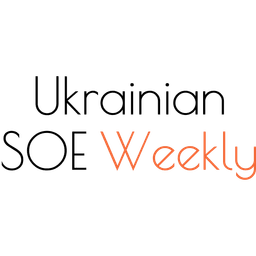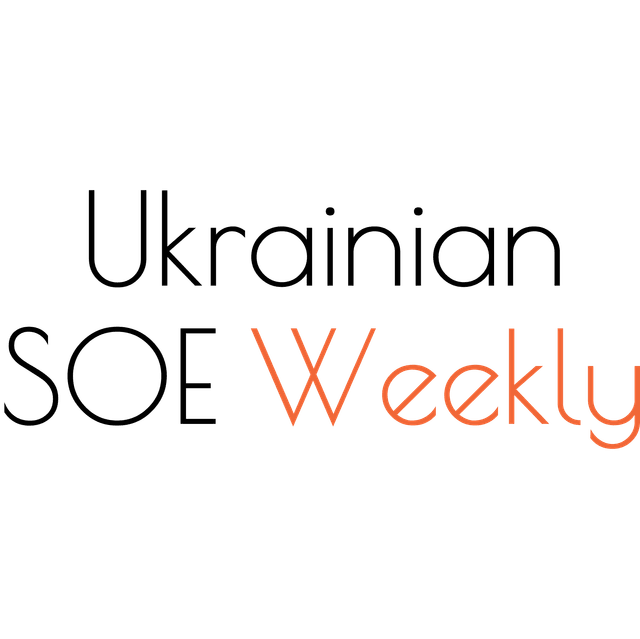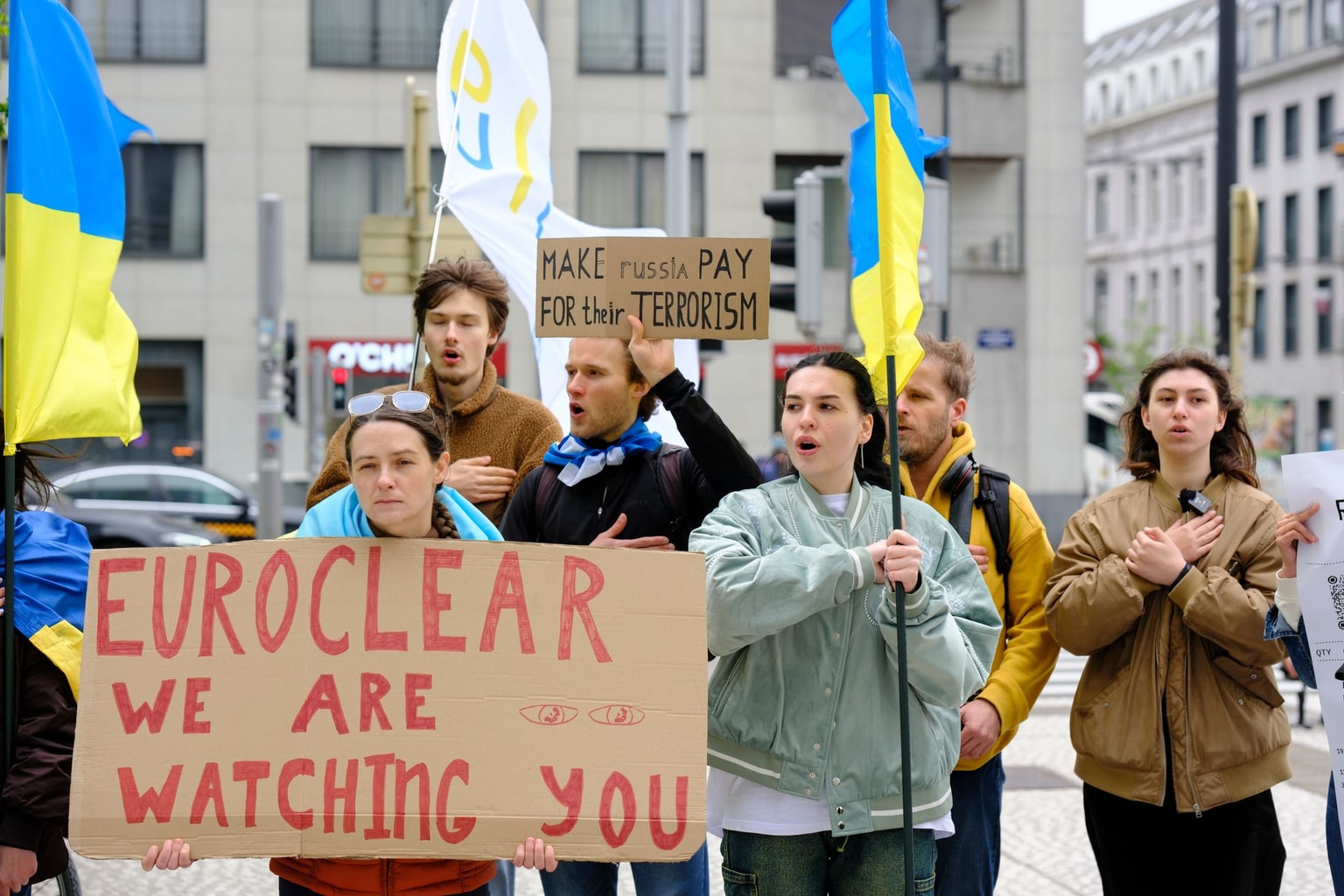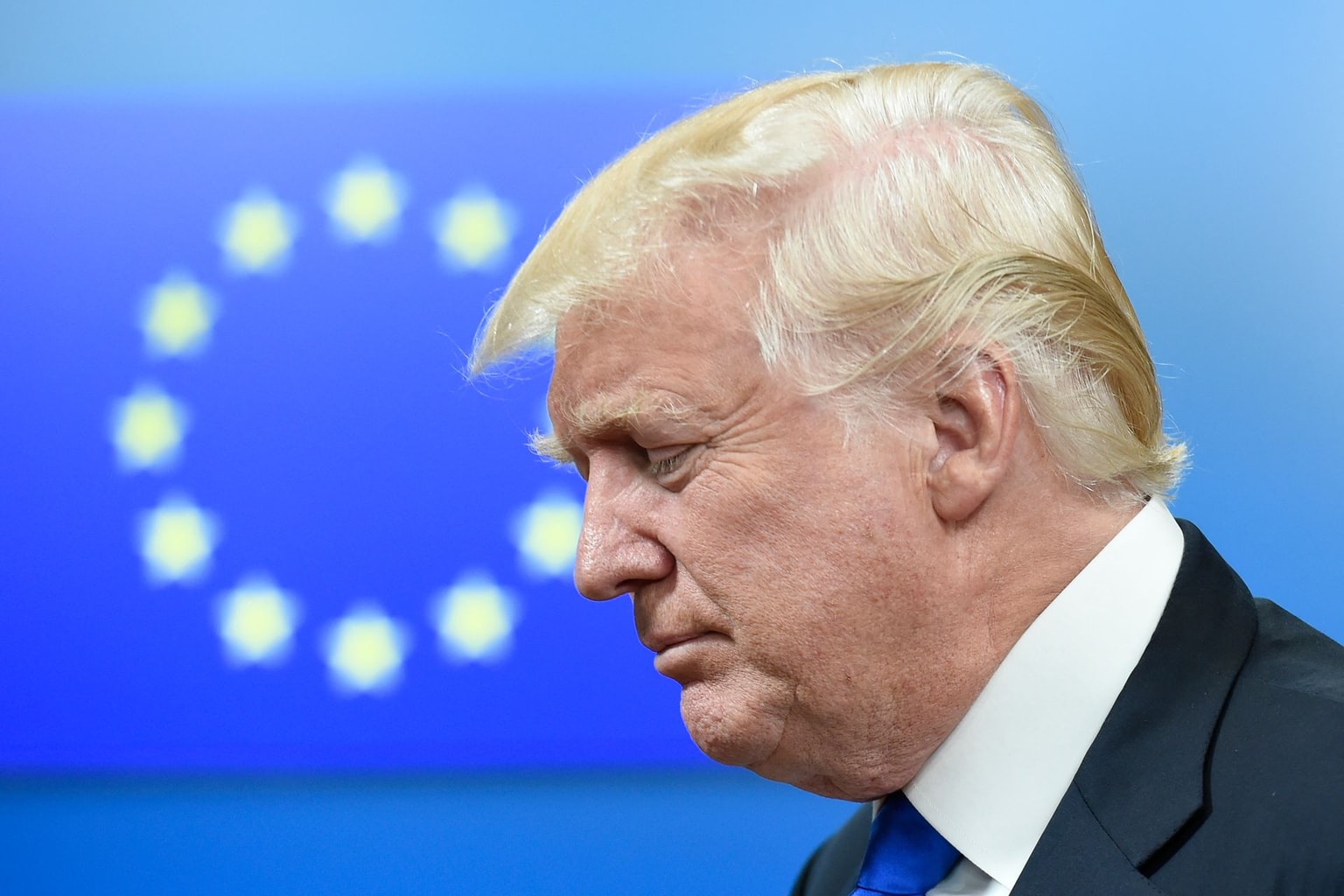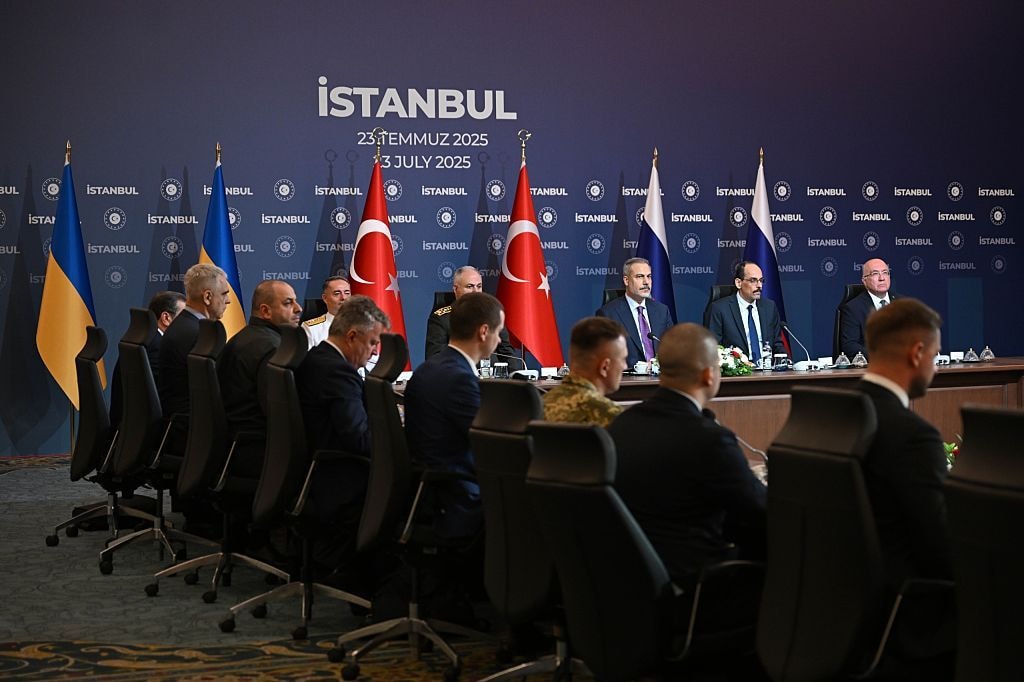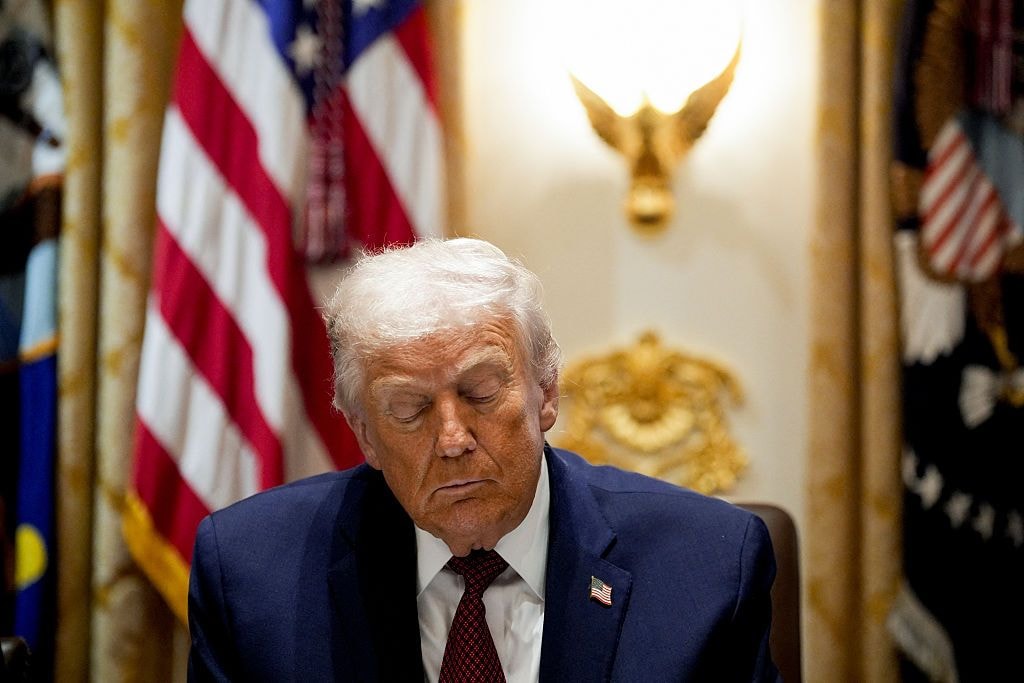Editor’s Note: This is issue 76 of Ukrainian State-Owned Enterprises Weekly, covering events from Feb. 18-24, 2023. The Kyiv Independent is reposting it with permission.
Ukrainian SOE Weekly is an independent weekly digest based on a compilation of the most important news related to state-owned enterprises (SOEs) and state-owned banks in Ukraine. This publication was produced with the financial support of the European Union within the project “Supporting Ukraine in rebuilding and recovery” implemented by the KSE Institute. The contents of this publication are the sole responsibility of the editorial team of the Ukrainian SOE Weekly and do not necessarily reflect the views of the European Union.
Corporate governance of SOEs
CEO of GTSOU still not appointed. The supervisory board of the Main Gas Pipelines of Ukraine – Mahistralni Gazoprovody Ukrainy (MGU) has yet to appoint a new CEO for the Gas Transmission System Operator of Ukraine (GTSOU), more than five months after the dismissal of the previous CEO, Serhiy Makogon, in September 2022.
The MGU’s supervisory board announced a competitive selection on Nov. 25, 2022. No further information has been released publicly, including how many candidates applied or when the selection would be completed.
According to Ukraine’s current law, the CEO candidate for the GTSOU must be first approved by the Cabinet of Ministers and only then appointed by the MGU’s supervisory board. No public information is available on whether MGU’s board has selected a candidate via a competitive process and submitted that candidacy for the Cabinet’s approval, nor whether the Cabinet has approved such a candidate.
The MGU is the owner of the GTSOU, and the MGU’s supervisory board acts as the general meeting of the GTSOU. It is in that role that the MGU’s supervisory board was running the competitive selection for the GTSOU’s CEO.
In SOE Weekly (Issue 67), we reported that the candidate list was leaked to the media. According to Ekonomichna Pravda’s sources, 19 candidates were longlisted. The submission deadline was Dec. 12, suggesting that all applicants were screened, and the longlist was drawn up in less than a week.
In SOE Weekly (Issue 67), we reported that the previous CEO, Makogon, was dismissed by the MGU’s supervisory board on Sept. 16. Makogon was succeeded by acting CEO Paweł Józef Stańczak. Prior to that, Stańczak worked as the GTSOU’s Deputy CEO for Development and Transformation.
Makogon criticized the new competitive selection, noting that the longlist included no foreign candidates. He said that the selection procedure was for show, and he had no doubt as to who would be shortlisted. Makogon said that many reputable candidates, who were contacted by the executive search company supporting the selection (Odgers Berndtson), flatly refused to apply.
Earlier, Makogon said that before his dismissal, the MGU wanted to establish an executive board, allegedly aiming at diluting Makogon’s powers without dismissing him. However, now that he has been dismissed, the MGU no longer requires any executive board and merely wants to appoint a loyal CEO, Makogon claimed.
According to media reports, in June, the MGU’s supervisory board formally proposed Serhiy Oleksiyenko and Andriy Khomenko as CEO candidates without a competitive selection, but the Cabinet did not approve either.
Ukrainian security issuers are now required to disclose information about their ties with Russia and its satellites. On Feb. 21, the National Securities and Stock Market Commission (NSSMC) established a procedure for security issuers to disclose information on their ties with risk-zone countries, namely Russia, Belarus, Iran, and North Korea.
The NSSMC’s new decision mandates that security issuers (which include SOEs and state-owned banks registered as joint-stock companies) should submit this information to the NSSMC by April 30 April.
The disclosure must include any material information on the company’s engagements with or in Russia and its satellites. Specifically, the disclosure should state whether:
- the company’s owners include risk-zone countries’ citizens, residents, or legal entities;
- the company’s governing bodies include risk-zone countries’ citizens or residents;
- the company has any commercial relations with risk-zone countries’ counterparties, including legal entities controlled by risk-zone countries;
- the company has any subsidiaries, branches, representative offices, or other units operating in risk-zone countries;
- the company has any joint ventures with risk-zone countries’ citizens, residents, or legal entities;
- the company has any equity stakes (shares) in a legal entity domiciled in or controlled by risk-zone countries;
- the company holds any securities other than shares of a legal entity domiciled in or controlled by risk-zone countries.
In addition, the same requirement is included in the new draft of the NSSMC regulation on disclosure.
The initiative to establish disclosure rules for business ties with the aggressor state and its satellites evolved from the International Working Group on Russian Sanctions, driven by its members Oleksandr Lysenko and Andriy Boytsun. Later, Lysenko developed specific disclosure rules together with the NSSMC.
These rules aim at increasing awareness of companies and banks’ investors, creditors, clients, and other stakeholders of ties with aggressor states. Exposing such business ties can significantly increase the reputational risks for these organizations and make their reputational costs prohibitive, causing them to sever their links with Russia and its satellites.
Note that the NSSMC’s decision and draft regulation on Disclosure only cover the NSSMC’s supervisees. In other words, it does not cover uncorporatized SOEs (such as state unitary enterprises) or private companies that do not issue securities. A similar legal framework for these entities needs to be developed and adopted.
Energy
Naftogaz takes over another few gas distribution companies. On Feb. 17, the Cabinet of Ministers approved the transfer of shares in several gas distribution companies to Chornomornaftogaz, a Naftogaz subsidiary, to prevent the risk of an emergency in the energy sector.
The said shares of these companies were seized in criminal proceedings earlier. According to media reports, they include:
- 61% of shares in Ternopilgaz;
- 81.36% of shares in Korostyshivgaz;
- 32.9% of shares in Kirovohradgaz;
- 14.68% of shares in Khmelnytskgaz;
- 65.77% of shares in Melitopolgaz;
- one share in each of a number of other gas distribution companies.
The media reports did not specify the names of the “other gas distribution companies”. It is also unclear why exactly one share in each of them had to be seized.
The controlling stake (51% of shares) in Kirovohradgaz is already owned by Naftogaz.
In SOE Weekly (Issue 71), we reported that Naftogaz changed the management of regional gas distribution companies Kharkivgaz and Dniprogaz on Jan. 16. Both were part of oligarch Dmytro Firtash’s RGC Group.
The RGC accused Naftogaz of an “attempted raid.” In response, Naftogaz referred to the Cabinet of Ministers’ decision dated May 28, which transferred the corporate rights of about 20 regional gas distribution companies to its subsidiary Chornomornaftogaz.
Earlier in May, Kyiv’s Pechersk Court seized shares of Firtash’s regional gas companies because they evaded payment for the use of gas networks. (After that, the Cabinet transferred these rights to Chornomornaftogaz.) The RGC then filed lawsuits to overturn the Pechersk Court’s decision. This significantly delayed the process of changing management.
In September, Naftogaz established a new subsidiary named Gas Distribution Networks of Ukraine LLC to consolidate the regional gas distribution companies.
Ekonomichna Pravda wrote earlier that, besides the transfer of shares of the gas distribution companies to the Naftogaz group, their gas networks are being transferred to Gas Distribution Networks of Ukraine, also part of the Naftogaz group (or such transfers are planned). At the same time, the debts of the gas distribution companies are not transferred along with their networks. According to the publication, Naftogaz is doing this in order to clear itself of these companies’ debt and impose that debt on the Gas Transmission System Operator of Ukraine (GTSOU).
Infrastructure
Former Infrastructure Minister Pyvovarsky charged with causing more than $30 million in damage to the state. On Feb. 22, the National Anti-Corruption Bureau of Ukraine (NABU) and the Specialized Anti-Corruption Prosecutor’s Office (SAPO) charged Andriy Pyvovarsky, the former minister of infrastructure, with abuse of power, which allegedly caused more than $30 million in damage in 2015. Pyvovarsky served as the Minister of Infrastructure in the Arseniy Yatsenyiuk government from December 2014 to April 2016.
Volodymyr Shulmeister, who was the first deputy minister of infrastructure, as well as chaired the ministry’s tariff council at the time, was also charged in absentia.
According to the NABU, in 2015, Pyvovarsky and Shulmeister issued an order allowing private companies to charge half the harbour dues at the Pivdenny (Southern) seaport. The water area of this port is state property in the use of the Ukrainian Sea Ports Authority (USPA). Only a state enterprise has the right to charge harbour dues, the NABU said.
Due to Pyvovarsky’s order, the state received only part of the funds it was owed; the rest was collected by private companies. As a result, the state suffered $30 million in damages, which experts confirmed, the NABU claimed.
According to the NABU, the order was adopted without proper economic justification and contrary to the comments of the department of economics and finance of the Ministry of Infrastructure and the USPA.
Pyvovarsky responded on Facebook that according to the law on sea ports of Ukraine, proceeds from tonnage tax are distributed between the user of the port’s harbour (the USPA in this case) and the owner of the operational harbour (in this case, private company TIS). He argued that the ministry’s order was therefore not a crime.
Pyvovarsky added that the order, which changed the procedure for distributing ship dues, was previously approved by a number of ministries and agencies, including a Cabinet of Ministers meeting and discussion at the tariff council.
The order was also cleared by the Ministry of Justice, “and therefore checked for compliance with the current legislation of Ukraine,” Pyvovarsky said.
Note that the Ministry of infrastructure effectively fulfils three roles for USPA: owner, policymaker, and regulator. According to the OECD Guidelines on the Corporate Governance of SOEs, the state’s roles as owner, policymaker, and regulator should be separated.
In particular, tariffs should instead be set by an independent regulatory body, with no influence from the Minister of Infrastructure. No such regulator has been established for the transport sector in Ukraine to date, despite calls to do so by experts since at least 2016 and intentions of the Ministry of Infrastructure since 2017.
Note also that such a regulator should be independent and must ensure a level playing field for both SOEs and private companies. This implies that if a private player is legally entitled to collect certain payments, it should not face discrimination relative to SOEs.
If such an independent regulator with proper governance had been installed, there would be fewer reasons for the law enforcement agencies to be involved in cases related to establishing tariffs.
Ukrzaliznytsia to receive a $25 million grant from the World Bank. On Feb. 21, Ukrzaliznytsia’s CEO Oleksandr Kamyshin reported that the company would receive a $25 million grant from the World Bank to buy and build container platforms.
According to Kamyshin, Ukrzaliznytsia has not yet received these funds.
The grant is part of a $50 million pledged by the World Bank for the repair and restoration of Ukraine’s transportation network. This is in addition to the World Bank’s $535 million loan approved earlier, Kamyshin said.
In SOE Weekly (Issue 72), we reported that Ukrzaliznytsia took losses of Hr 10.8 billion ($295 million) in 2022. The loss from passenger transportation was Hr 13.3 billion ($364 million), suggesting that the company’s other segments, such as cargo transportation, made a profit of Hr 2.5 billion ($68 million).
Ukrzaliznytsia also expects to lose Hr 20.2 billion ($553 million) in 2023 due to the large social burden and restrictions on cargo transportation.
In SOE Weekly (Issue 68), we reported that after Russia’s invasion, the Ukrainian government effectively gave Ukrzaliznytsia new tasks. We also provided details of the financial support that the government, Ukrgasbank, and international partners provided to Ukrzaliznytsia throughout 2022.
Ukrzaliznytsia may set up a cargo carrier to operate in Europe. On Feb. 21, Ukrzaliznytsia’s CEO Oleksandr Kamyshin reported that Ukrazaliznytsia may establish a company to transport cargo in Europe by the end of 2023.
The need for such a company outside Ukraine has been driven by Ukrainian cargo carriers’ difficulties in working with European carriers, Kamyshin said.
He added that it is necessary not only to purchase rolling stock, but also to obtain a license, registration, and recruit a team, in order to establish a cargo carrier.
“There is hope, and we are doing everything to make it come true (by the end of 2023), but… we would like (the speed of approvals in Europe) to be faster,” Ukrzaliznytsia’s CEO said.
In SOE Weekly (Issue 10), we reported that according to the then Director of Ukrzaliznytsia Cargo Business Unit Irakli Ezugbaia, the rail operator would establish a separate entity for its cargo business called UZ Cargo during the company’s reform. Ezugbaia said back then that cargo transportation remained the only profitable segment for Ukrzaliznytsia. The immediate task was to ensure a transparent, efficient structure for UZ Cargo.
Based on publicly available information, the plans to unbundle the cargo business in a new entity haven’t been implemented. In establishing a separate cargo transportation entity outside Ukraine, it may be useful to get back to the idea of unbundling all Ukrzaliznytsia’s cargo operations in a separate entity.
Privatization
Large-scale privatization to be launched through online auctions. On Feb 21, the Cabinet of Ministers approved an electronic auction procedure for the sale of large-scale privatization objects – defined as having assets worth more than Hr 250 million ($6.8 million).
Previously, large-scale privatization objects were sold at offline auctions, unlike small-scale ones.
According to the State Property Fund of Ukraine (SPFU), in order to fully launch large-scale privatization, the Verkhovna Rada needs to pass a decision allowing the SPFU to set requirements for potential investors.
It is unclear what the SPFU meant by this. The fund did not specify what obstacles prevented it from setting requirements for potential investors, if any. The SPFU also did not say what type of “decision” it wanted the Verkhovna Rada needs to pass, and whether the Fund drafted such a “decision.”
Note that the “large privatization” procedure was introduced by the law on privatization adopted in 2018. Since that time, only one auction was completed, when the First Kyiv Machine-Building Plant (commonly known as the Bilshovyk) was sold for Hr 1.429 billion ($39 million) in October 2021.
As we wrote in SOE Weekly’s Issue 49, various media have suggested that the formal auction participants may have colluded in the bidding (see articles by NV Business and Ekonomichna Pravda).
In SOE Weekly (Issue 50), in November 2021, we reported that the Anti-Monopoly Committee of Ukraine (AMCU) announced an enquiry into possible collusion in response to these media reports. Based on publicly available information, in almost 1.5 years, the enquiry hasn’t been completed.
In SOE Weekly (Issue 55), we reported that the auction winner, General Commerce LLC, paid the Hr 1.4 billion ($39 million) that it had bid at the privatization auction. The money went into the state budget on Dec. 7, 2021, Dmytro Sennychenko, then Head of the State Property Fund said on Facebook.
In SOE Weekly (Issue 65), we reported that, based on a motion from State Bureau of Investigation (DBR), the court seized 44 real estate objects of the Bilshovyk in January 2022, since they were recognized as material evidence in the criminal proceedings.
Note also that according to a 2018 analysis by two SOE Weekly team members, Andriy Boytsun and Dmytro Yablonovskyi, the second sale of Kryvorizhstal in 2005 was the last and probably the only example of a successful large-scale privatization in the history of Ukraine.
Since the adoption of the new privatisation law in 2018, many large SOEs were put up for sale or prepared for privatization – such as the UMCC, Centrenergo, President Hotel, OPZ, Indar, Krasnolymanksa Coal Mine, and many others – but all these attempts have failed at various stages.
SPFU prepares for privatization of ZTMK, ZALK, and Kremniypolimer. On Feb. 22, the SPFU announced preparations for privatization of three large enterprises comprising the mining and steel complex in Zaporizhzhia. These include:
- Zaporizhzhia Titanium-Magnesium Plant (ZTMK), the only producer of spongy titanium in Europe;
- Zaporizhzhia Industrial Aluminium Plant (ZALK), the only producer of primary aluminium in Ukraine;
- Kremniypolimer, the only producer of organosilicon products in Ukraine.
According to the SPFU, electricity at the ZTMK has not been paid for years, and as a result, the company owed more than Hr 1.2 billion ($33 million) in 2020. In 2018 and 2019, the company’s losses were Hr 787 million ($21.5 million) and HR 656 million ($18 million), respectively. According to Ekonomichna Pravda’s sources, the ZTMK was deliberately dragged into debt. These facts indicate that the ZTMK will be difficult to privatize.
In SOE Weekly (Issue 38), we reported that the Special Anti-Corruption Prosecutor’s Office (SAPO) said that the ZTMK had been returned to state ownership. The ZTMK previously belonged to the sanctioned oligarch Dmytro Firtash.
According to the SAPO, the Commercial Court of Zaporizhzhia Oblast made the ruling, to satisfy the SAPO’s claim against Firtash’s Tolexis Trading Limited and the ZTMK.
The SAPO said that the court had already made a similar decision in July 2018, which was upheld on appeal. However, the Supreme Court remanded the case for retrial. So far, the court of first instance fully satisfied the SAPO’s claim and returned the plant to state ownership.
Later, Tolexis Trading Limited’s lawyer Roman Chyshinsky said that the decision to return the ZTMK to state ownership would be challenged in the court of appeal. According to him, the decision was “biased and unfair.”
On May 23, the Commercial Court of Cassation within the Supreme Court definitively upheld the rulings in favour of the state.
In turn, the ZALK was nationalized in 2015, when Supreme Court returned 68.01% of the company’s shares to state ownership due to their owners not fulfilling their investment obligations.
The former owner, Russian oligarch Oleg Deripaska, tried to challenge Ukraine’s decision in international arbitration, but he lost his last shares in the company in February, when the HACC confiscated all of its Ukrainian assets, as we reported in SOE Weekly (Issue 75).
Confiscation of the aggressor state’s assets, nationalization, and asset seizure
Head of the Servant of the People faction proposes to dissolve ARMA and transfer seized assets to SPFU for public sale. On Feb. 22, David Arakhamia, head of the ruling Servant of the People parliamentary faction, suggested that the Asset Recovery and Management Agency (ARMA) should be dissolved, and the seized assets under ARMA should be transferred to the SPFU, where it would be listed in a transparent registry.
According to Arakhamia, ARMA was established to meet one of the conditions for a visa-free regime with the EU, but “in the end, it turned into a closed cabal, where there are a lot of seized assets, and everything is opaque”.
SOE Weekly has reported on ARMA’s dismal performance in early 2021. In Issue 18, we wrote that in 2020, ARMA obtained a meagre profit of Hr 15.7 million ($429,000) (transferred to the state budget). This implied an almost zero return (namely, 0.5%) on the assets under ARMA’s management, which ARMA said were more than Hr 3 billion ($82 million) at the time. ARMA’s own budget for 2020 was Hr 190.45 million ($5.2 million), implying that the above profit only covered as little as 8% of the agency’s own operational budget.
According to Ekonomichna Pravda, the SPFU wants to transform itself into a sovereign fund to manage the largest SOEs and confiscated Russian assets.
